What’s the Point? Points on Pendleton’s National Park Blankets Explained
A Guest Post by Fred Coldwell
(editor note: Fred Coldwell is our non-resident park blanket expert. The following post draws from his vast collection, research, and expertise. If you have questions about your vintage park blanket, Fred has your answers!)
Points are small lengths of thread sewn or woven into a trade blanket to indicate its size. French weavers have used points on their trade blankets since the 1690s. The famous English trading company, Hudson’s Bay Company, began using points on its trade blankets around 1780 and has continued using them until this year, long after their original use as markers for fur trading with First Nations.
Pendleton, by contrast, used points only on its National Park blankets after the fur trade was over, and only for about 20 years. Points were used on Park blankets from 1916 to about 1936 or 1937, with one exception discussed later.
Points Indicate Blanket size
Pendleton Woolen Mills began weaving its national park blankets around 1916. James J. Hill, builder of the Great Northern Railroad that touched the south end of Glacier National Park, asked Pendleton to make a blanket to sell at his park stores that captured the spirit of earlier fur trading days. Pendleton created the Glacier Park blanket. It consisted of four 3" bars of black, yellow, green and red at each end.
The Glacier Park came in three sizes with points to indicate each size: 60" x 72" had 3-1/2 points, 66" x 80" had 4 points, and 72" x 84" had 5 points. Here are two early examples:

The smallest 60" x 72" 3-1/2 point blankets were produced only up to the early 1920s, when they were discontinued. The medium 66" x 80" 4 point was produced through 1934, when it increased 4" in length to 84" long. The largest 72" x 84" 5 point blanket was produced through 1936, when it was increased 6" in length to 90" long. Points disappeared around 1936 or 1937 when they lost their indication of former fixed sizes.
Pendleton added new National Park blankets during the 1920s. Blankets for Yellowstone National Park were introduced in 1923, followed by blankets for Grand Canyon National Park in 1927 and Rainier National Park in 1928. Also in 1928, and only for that year, Pendleton wove the Santa Fe blanket, the only national park blanket named for a famous trail instead of a national park. Until 1934, all these new blankets were made only in the 4 point 66" x 80" size. Only the Glacier Park was made in the largest 72" x 84" 5 point size through 1934, when the Yellowstone Park blanket also became available in that largest size.
Point Locations Differed Among Blankets
The smallest 3-1/2 point blanket had their points in the upper right hand corner of the center field, as seen on this pair of early Glacier Park blankets:
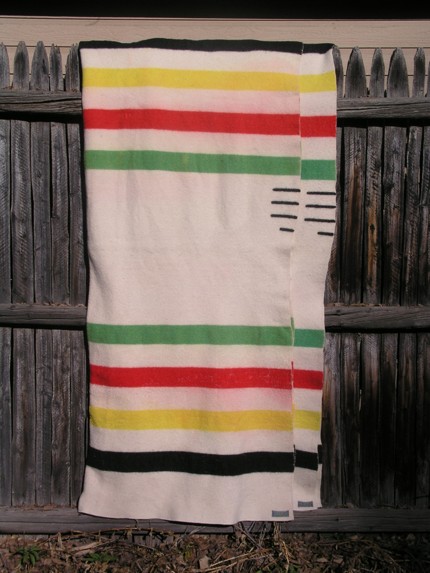
Glacier Park, Yellowstone Park, and Rainier Park blankets had their 4 or 5 points located in the lower left hand corner of their center field, as seen in these photos:
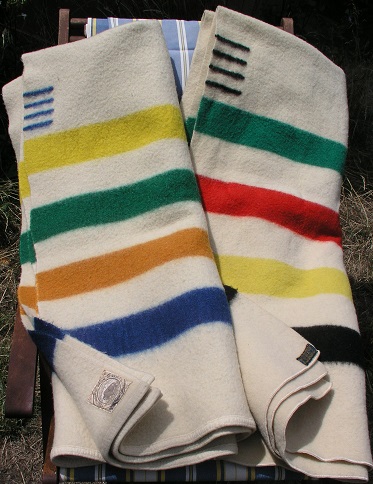
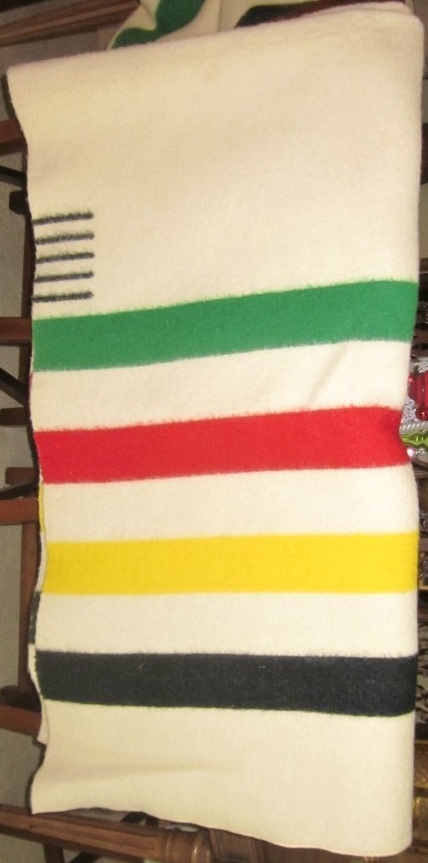
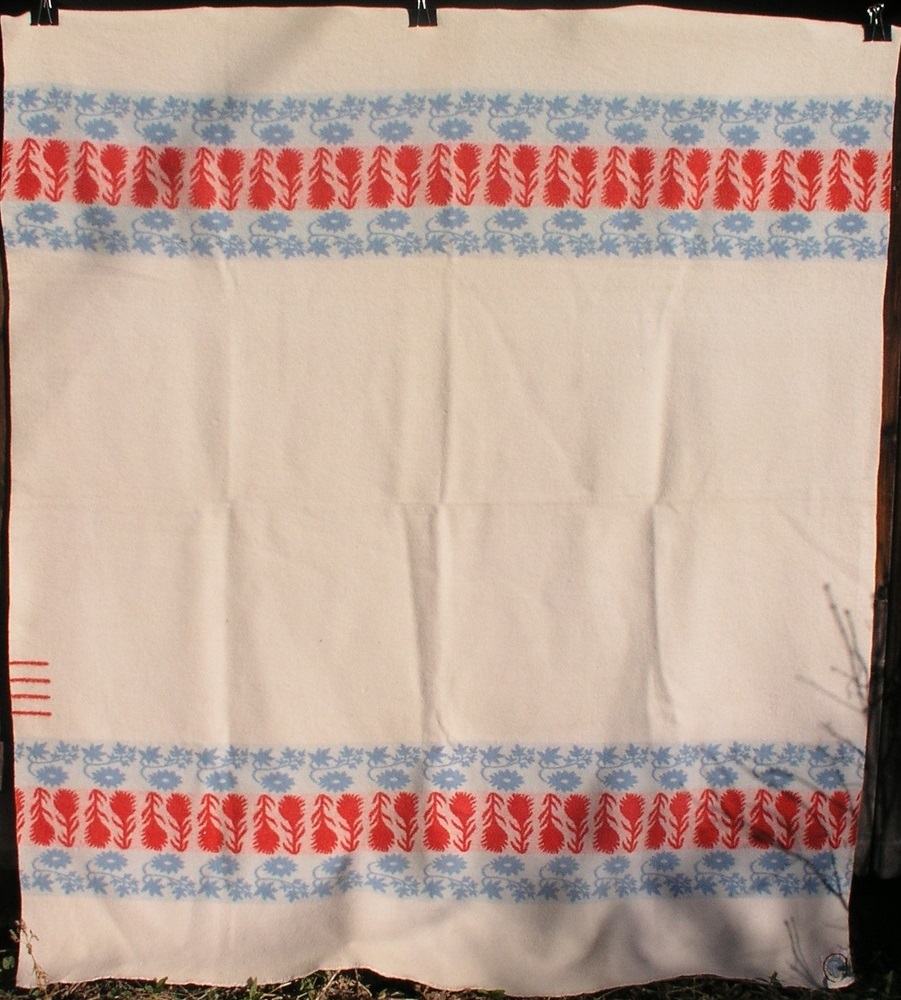
However, for reason unknown, the Grand Canyon and Santa Fe blankets had their 4 points in the lower right hand corner of the center field, as seen in these photos:
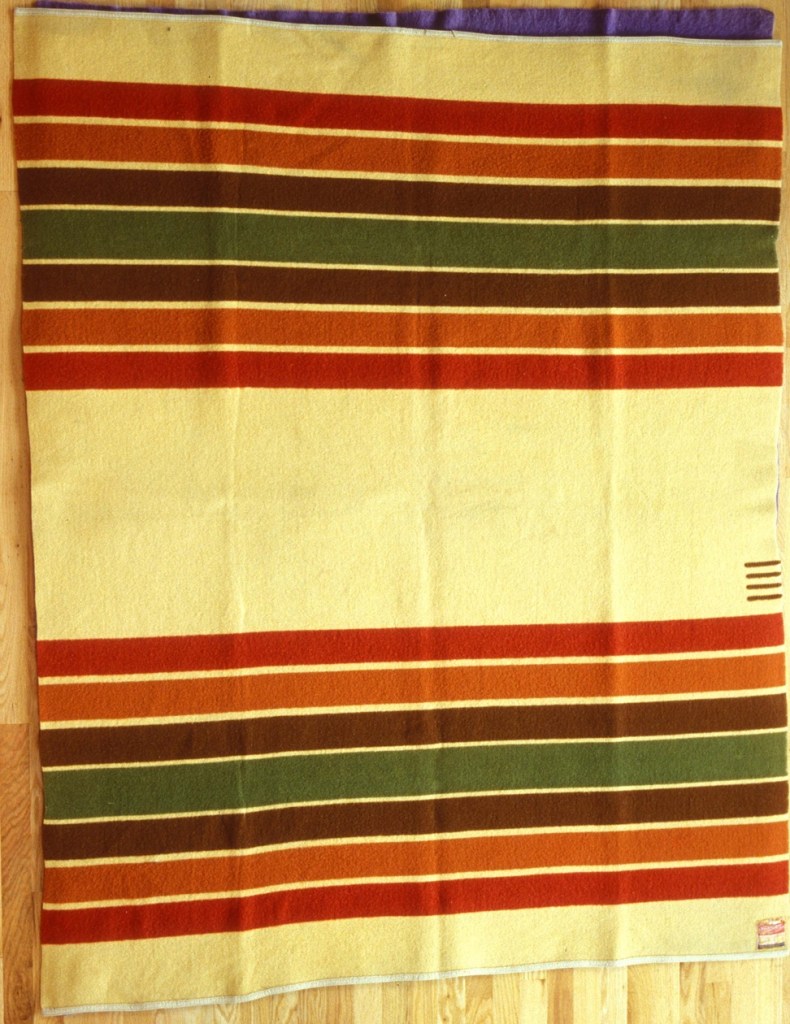

Color of Points Differed
Initially, the color of the sewn points in banded blankets was the same color as the outermost band or bar, as seen on these Glacier Park and Yellowstone blankets:
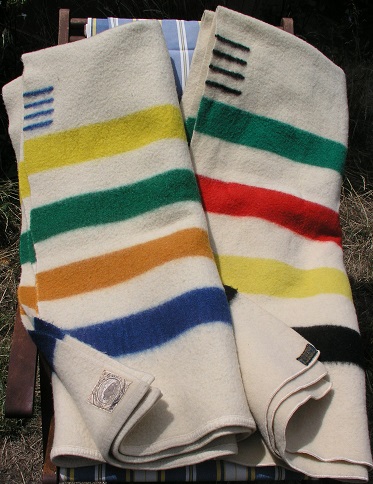
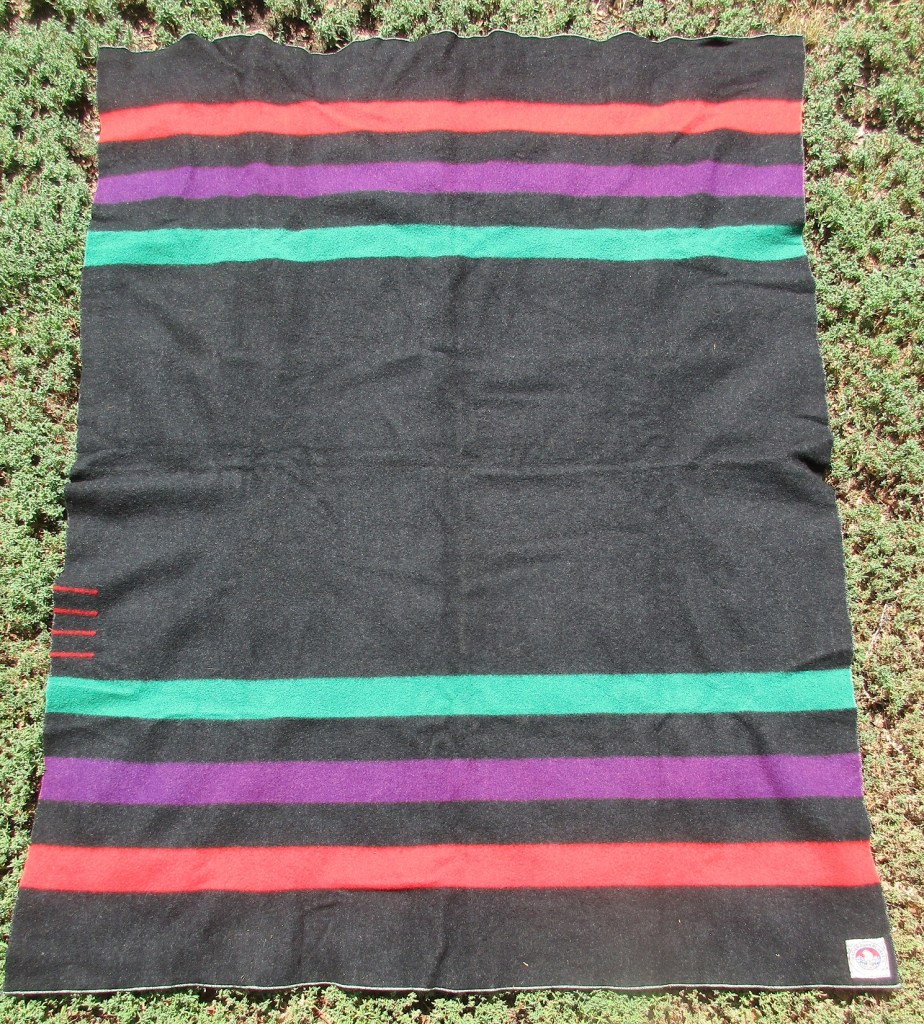
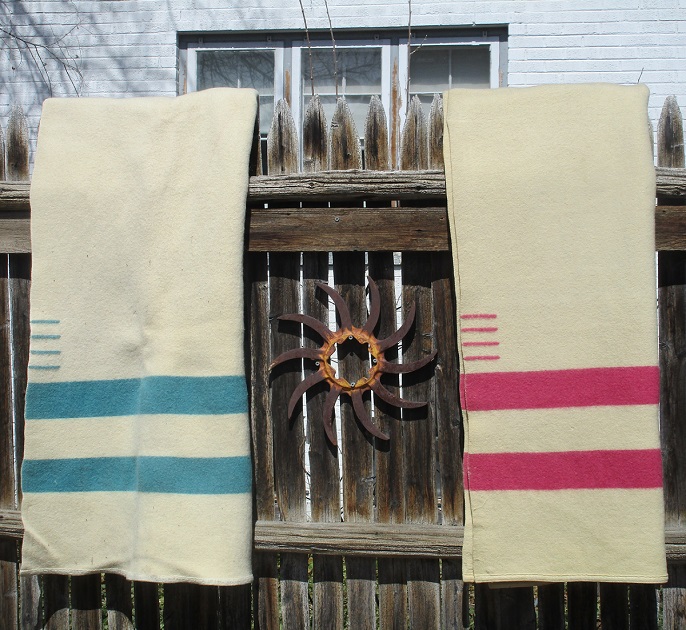
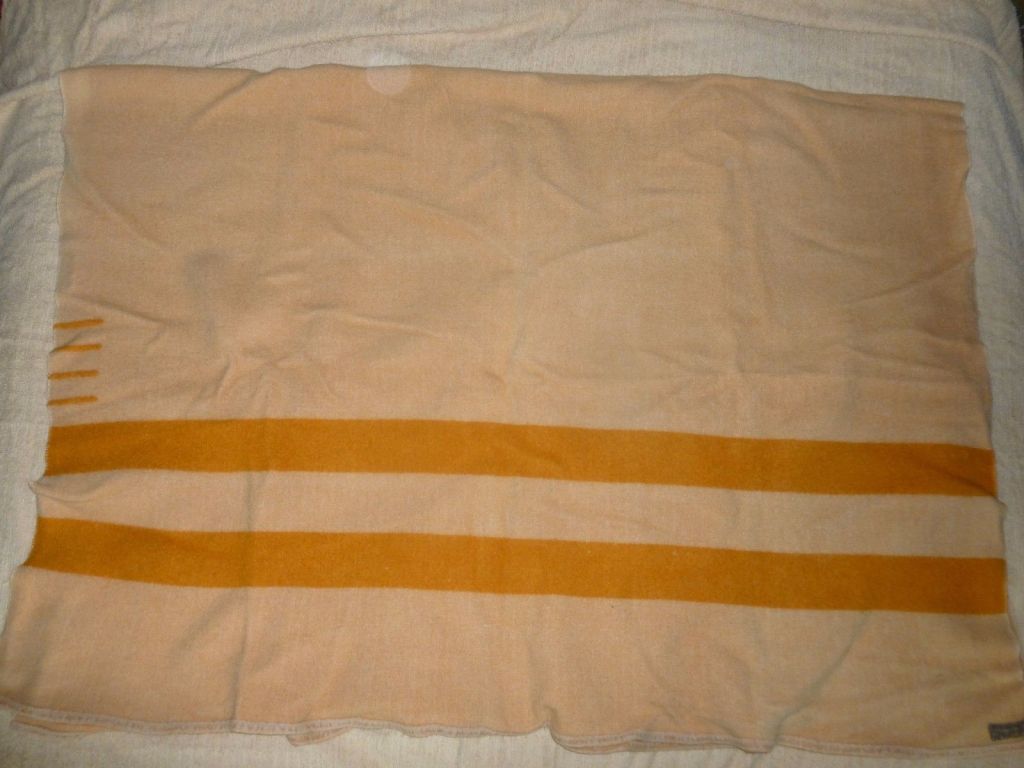
Points were often the darkest color in the blanket as seen in these Santa Fe and Grand Canyon blankets:
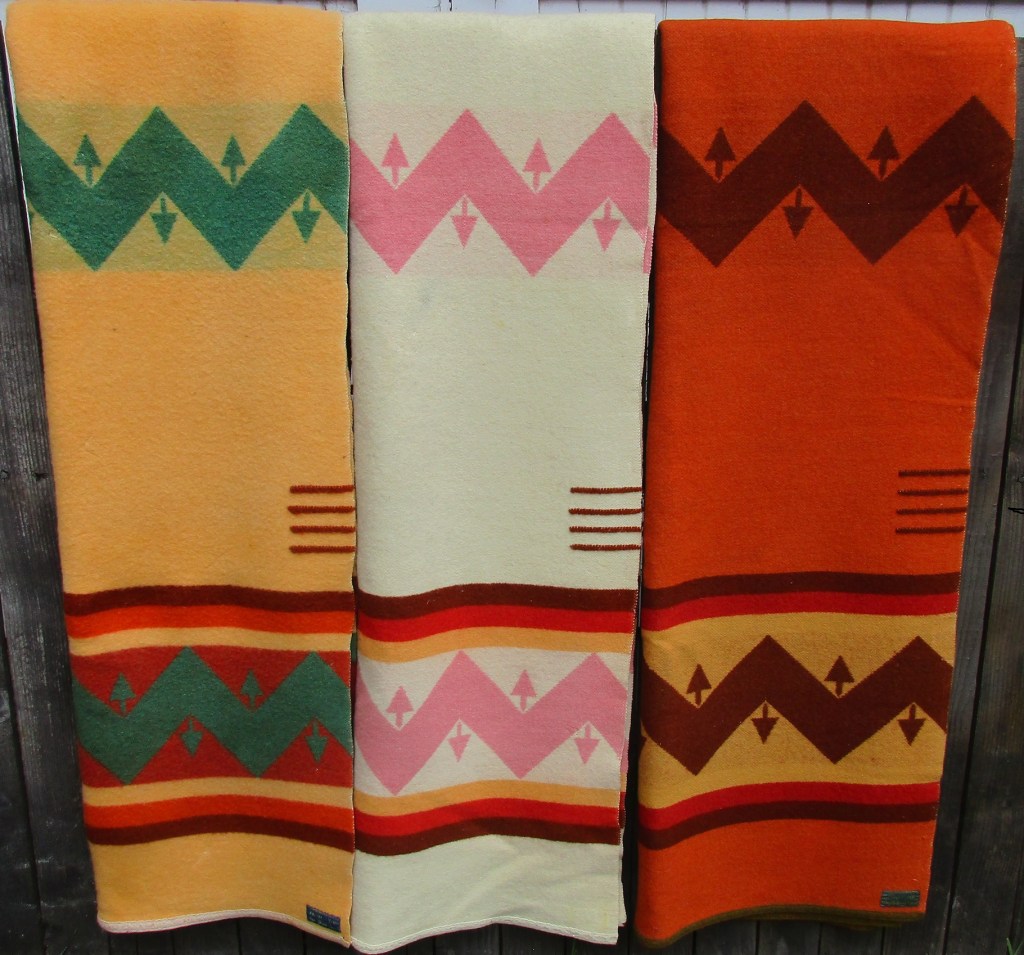

If the main body color was mild, then the points were sewn in a contrasting color that stood out:

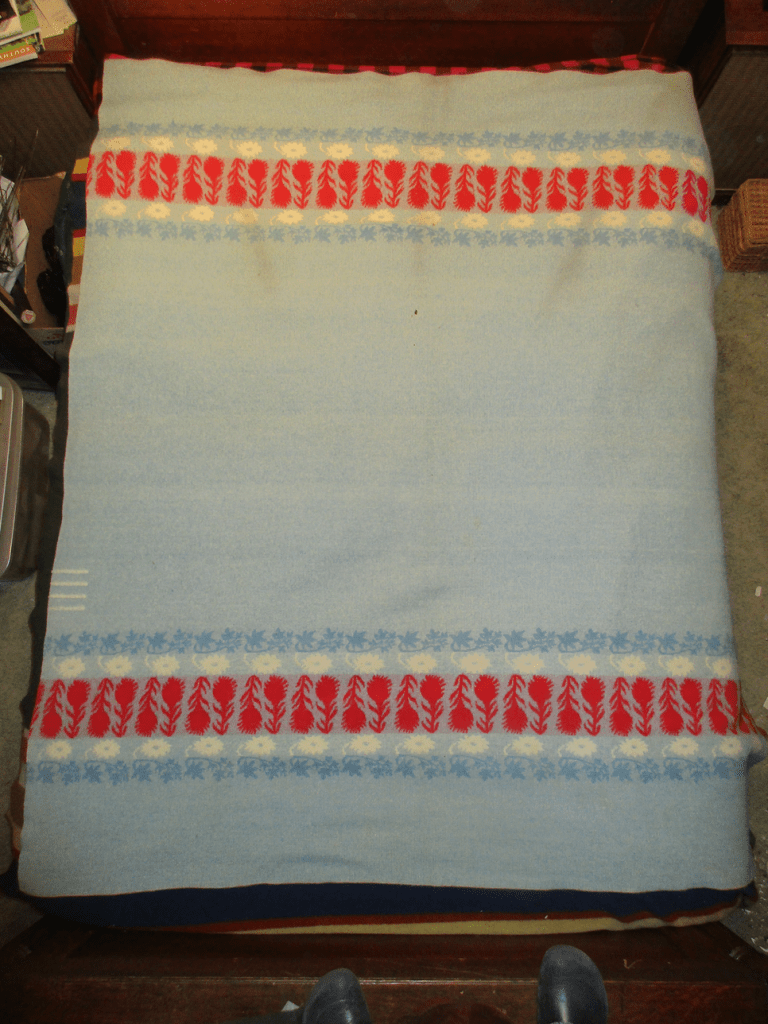
In Fall 1935, Pendleton issued a new Glacier Park blanket having 7 narrow stripes in black, red, green, yellow, green, red, and black. This early example also has 4 black points:
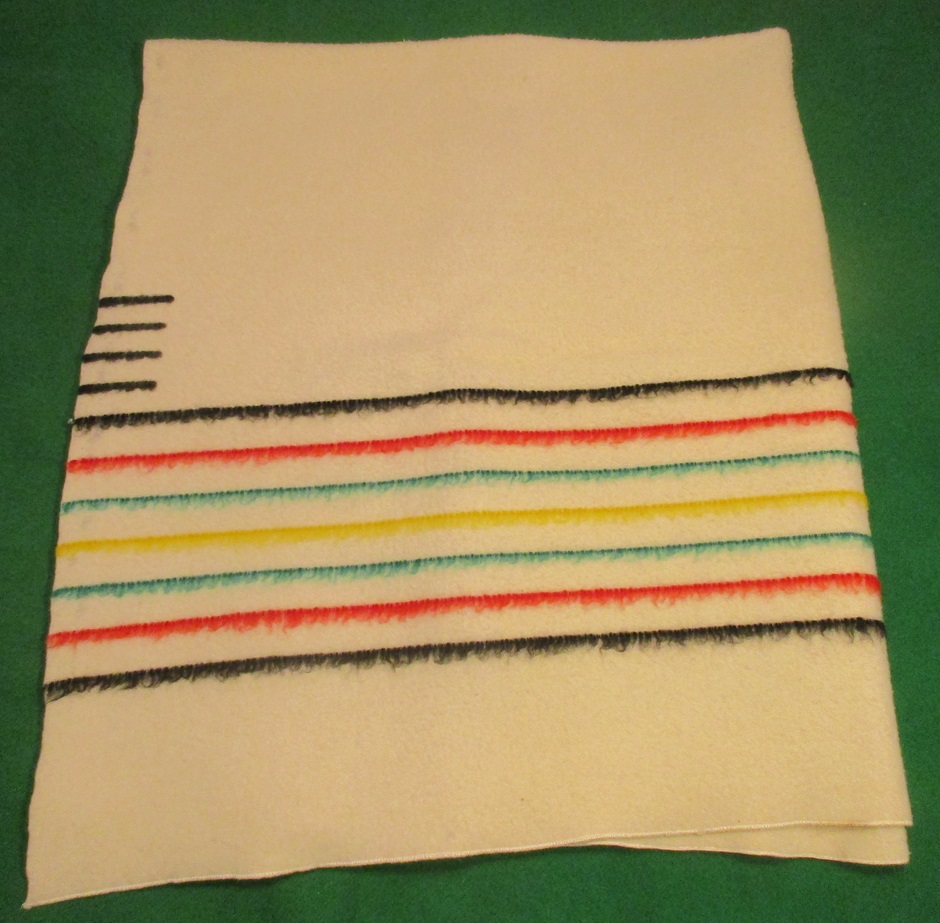
As mentioned earlier, in 1934 the medium blanket gained 4 inches in length and in 1936 the largest blanket gained 6 inches in length. Their 4 and 5 points no longer indicated their former lengths and likely became confusing as to their meaning. So, between their loss of usefulness and the additional costs of sewing them on in yet another machine operation, Pendleton ceased sewing points on their national park blankets sometime during 1936 and 1937. Factory records do not indicate exactly when this occurred, so these years are my best guess as to when that happened.
Nevertheless, in 1937 Pendleton introduced a new official Yellowstone Park blanket that carried forward the use of sewn on points for another 10 years. This new design had three 3-1/4 inch bars of black, red and black with black points sewn on the red bar. It came in 2 sizes, 66" x 84" with 4 points and 72" x 90" with 5 points. Here it is:

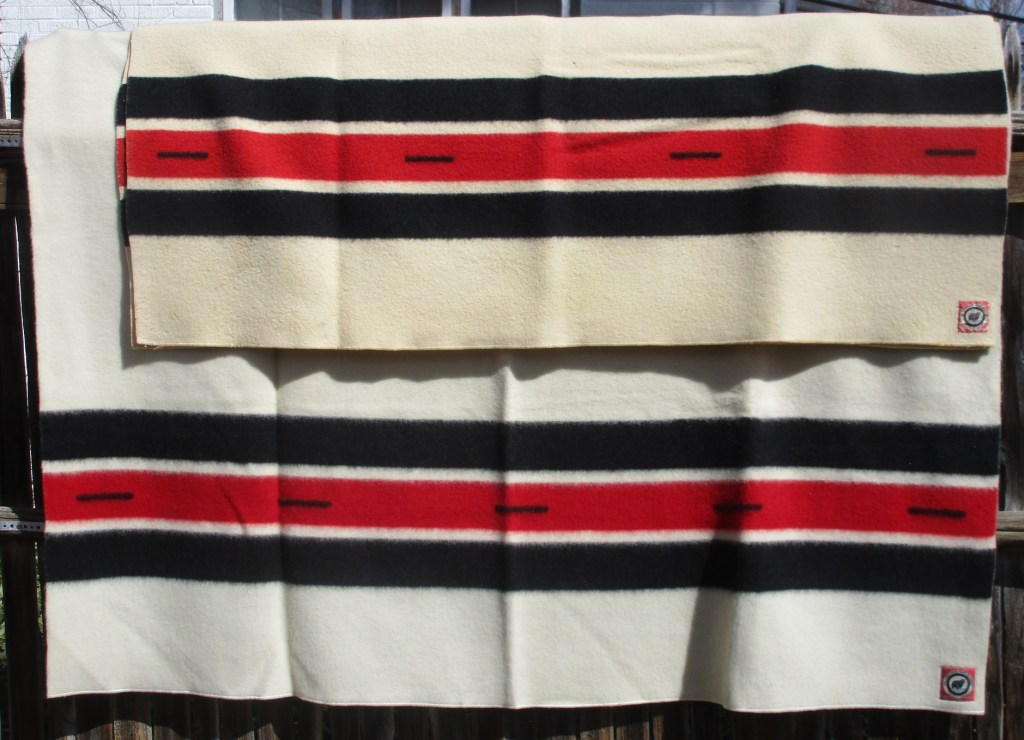
This beautiful and bold Yellowstone Park was replaced in 1947 by a new Yellowstone Park blanket that was identical to the 7 narrow stripe Glacier Park except for the color of the middle stripe, black on the new Yellowstone and yellow in the Glacier Park. This may seem confusing until one remembers the Glacier Park blanket always had a yellow bar in it since 1916 and used the narrow yellow stripe 12 years before this new Yellowstone Park was introduced, solidifying its claim to that color. Here is a close up of the 7 narrow stripes in the new Yellowstone Park blanket:

This 7 stripe Yellowstone continued in production for over 50 years, into the late 1990s.
Postwar Points blankets
After 1947 there were only two Pendleton blankets that had points in them. The first is the Grand Teton National Park blanket, a modernization of the 1937-1947 Yellowstone Park blanket. The Grand Teton was first produced from 1992 to 2009. It has three black/red/black bars top and bottom on a white field, with 6 black points now woven across the center red band. Here it is:
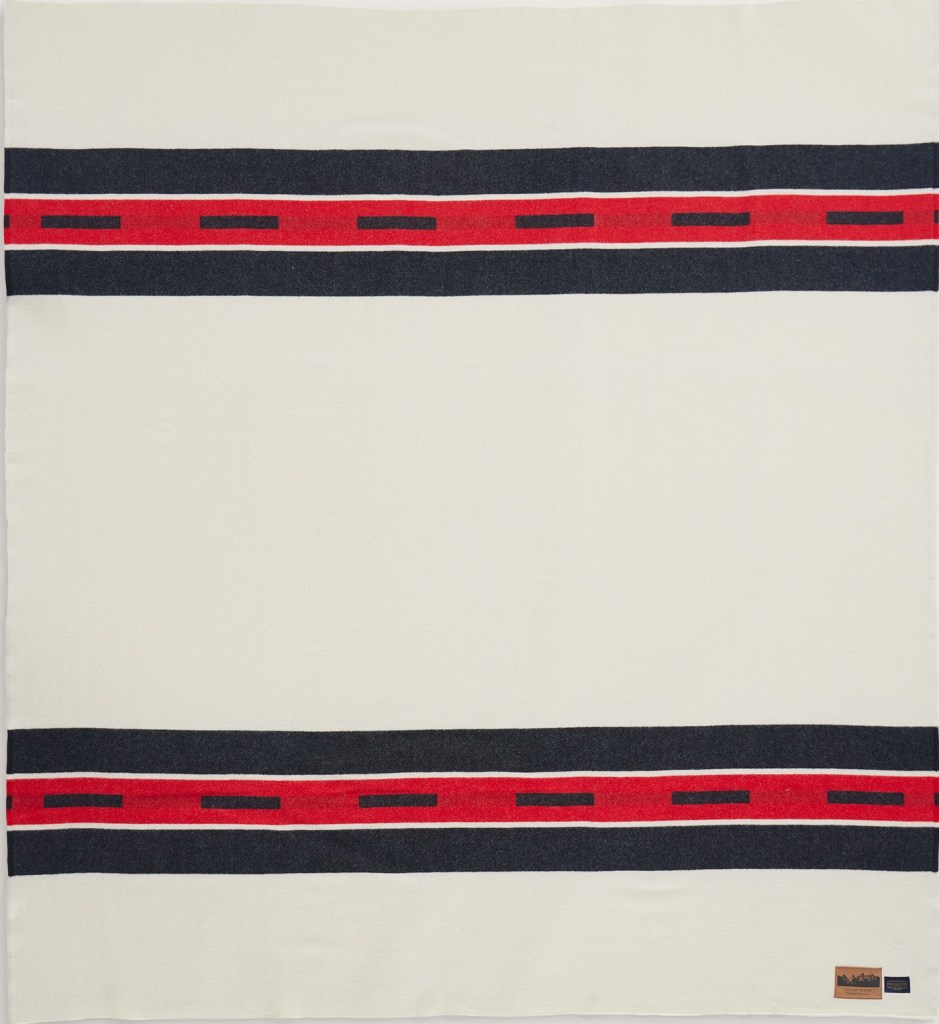
Because the Yellowstone Park name was already in use on a 7 narrow stripe Yellowstone Park blanket when this older design was revived in the Grand Teton, the Yellowstone name was unavailable. So, I imagine this older design was renamed Grand Teton because that national park is geographically immediately south of Yellowstone, retaining a close connection.
The larger old design blanket increased 8″ in width to 80″ but retained the same 90″ length to become 80″ by 90″. The Grand Teton came only in this size from its introduction in 1992 to its discontinuance in 2010. Given its greater width, the black points were increased to 6 in number to represent this wider size and were now woven into the two red bands, a more modern way of adding points. The Grand Teton, like all National Park blankets in 1992, was made from 100% virgin wool.
After being discontinued in 2010, the Grand Teton remained dormant until 2025, when it was re-issued in the same design and dimensions as used from 1992 to 2010. The only change was a new label that pictured the Grand Teton range in Wyoming.
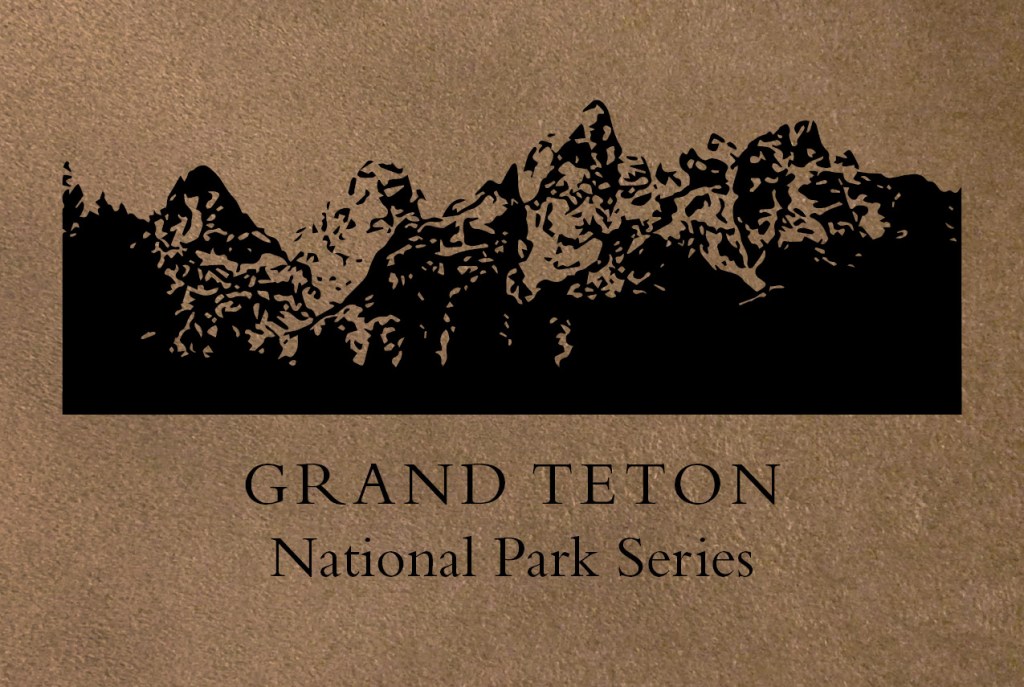
The second postwar blanket with points was designed to appeal to history buffs and collectors. It is the Corps of Discovery blanket issued in the mid-2000s to commemorate the 200th Anniversary of the Lewis and Clark Expedition (1804-1806). This reproduction, typical of an 1804 blanket issued to Corps of Discovery expedition members, has 3 indigo points to indicate its 54" x 72" size.
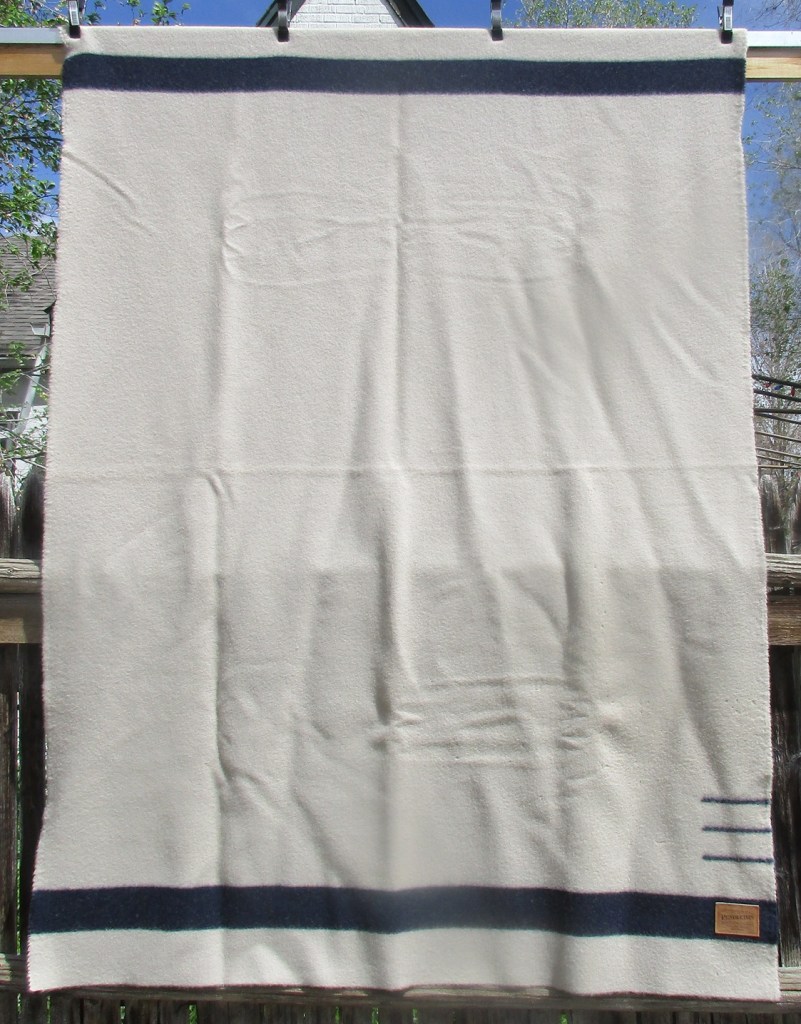
Its sides are unfinished and its top and bottom edges are simply torn without any binding. The twill weave discourages unraveling along all edges.

It came in two colors, authentic off white or a new terracotta, each with one indigo bar at each end. Like all current national park blankets, its fabric is 100% virgin wool.
Except for its Corps of Discovery reproduction blanket, Pendleton used points only on its National Park blankets, so any Pendleton blanket with points is one of its National Park blankets. They were produced primarily in the 1920s to the mid-1930s and, though a bit rare today, are not impossible to find. Points add historical distinction to any Pendleton National Park blanket so are well worth seeking out.
And now you know what the point is.
See our National Parks Collection here: Pendleton National Park Series
